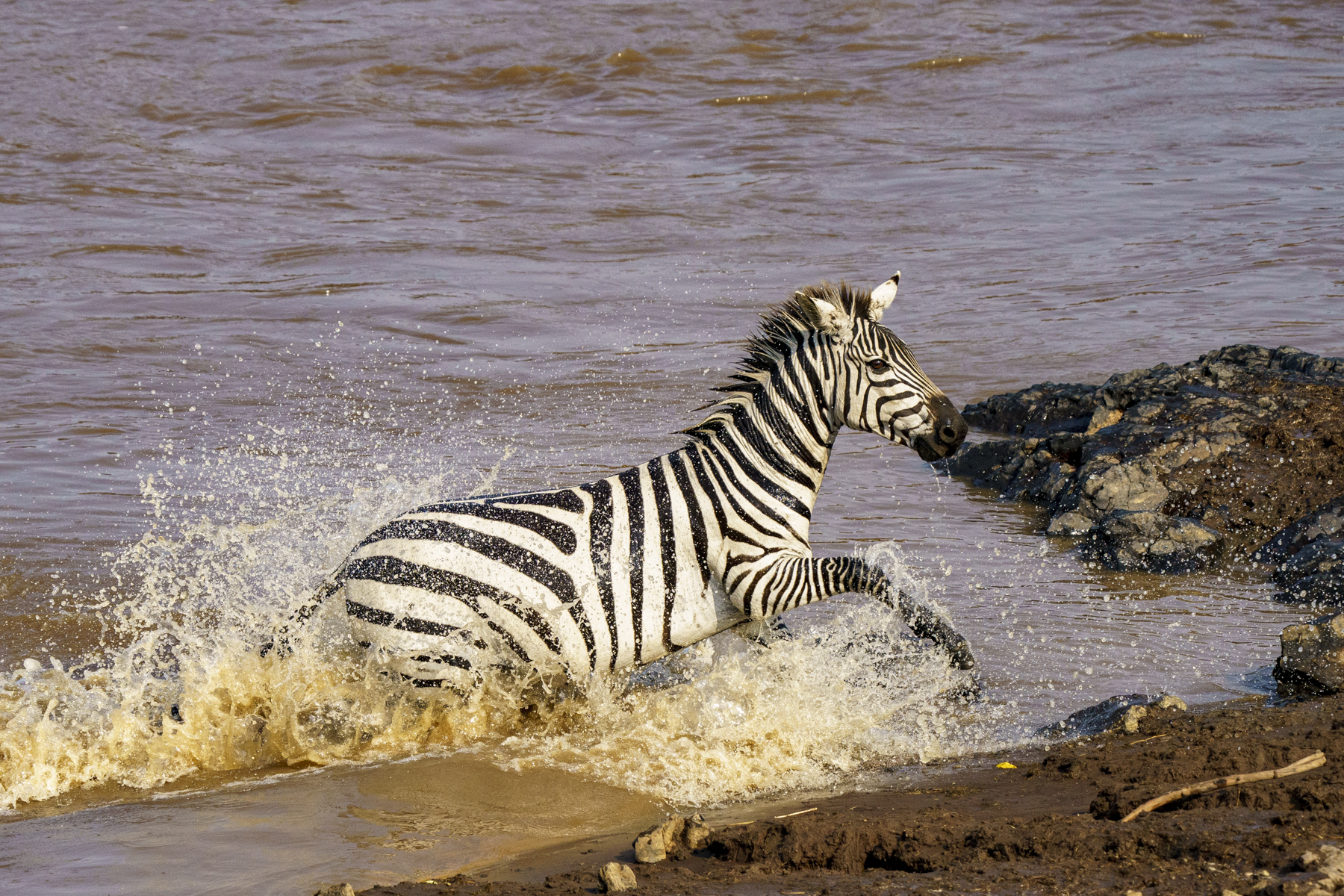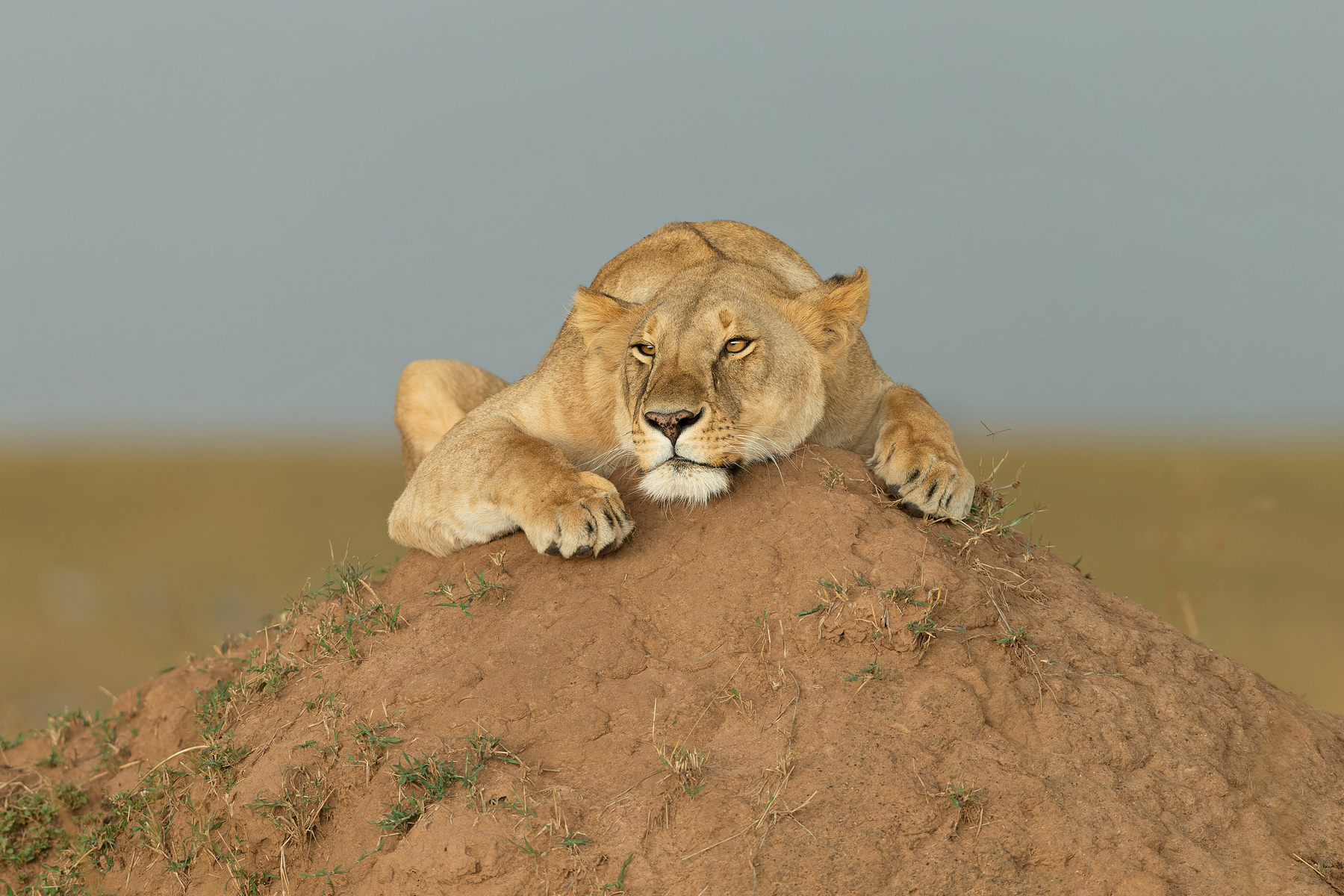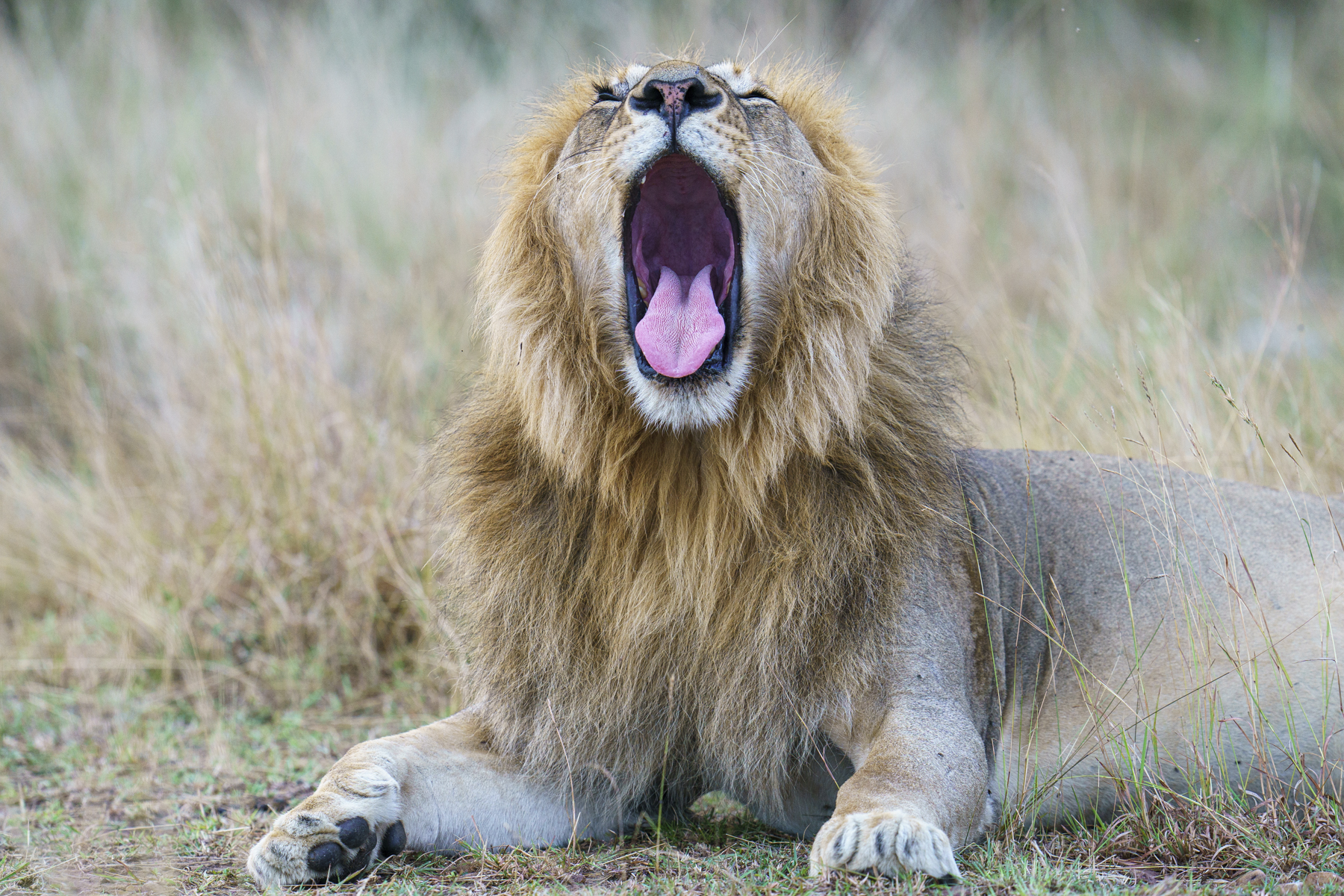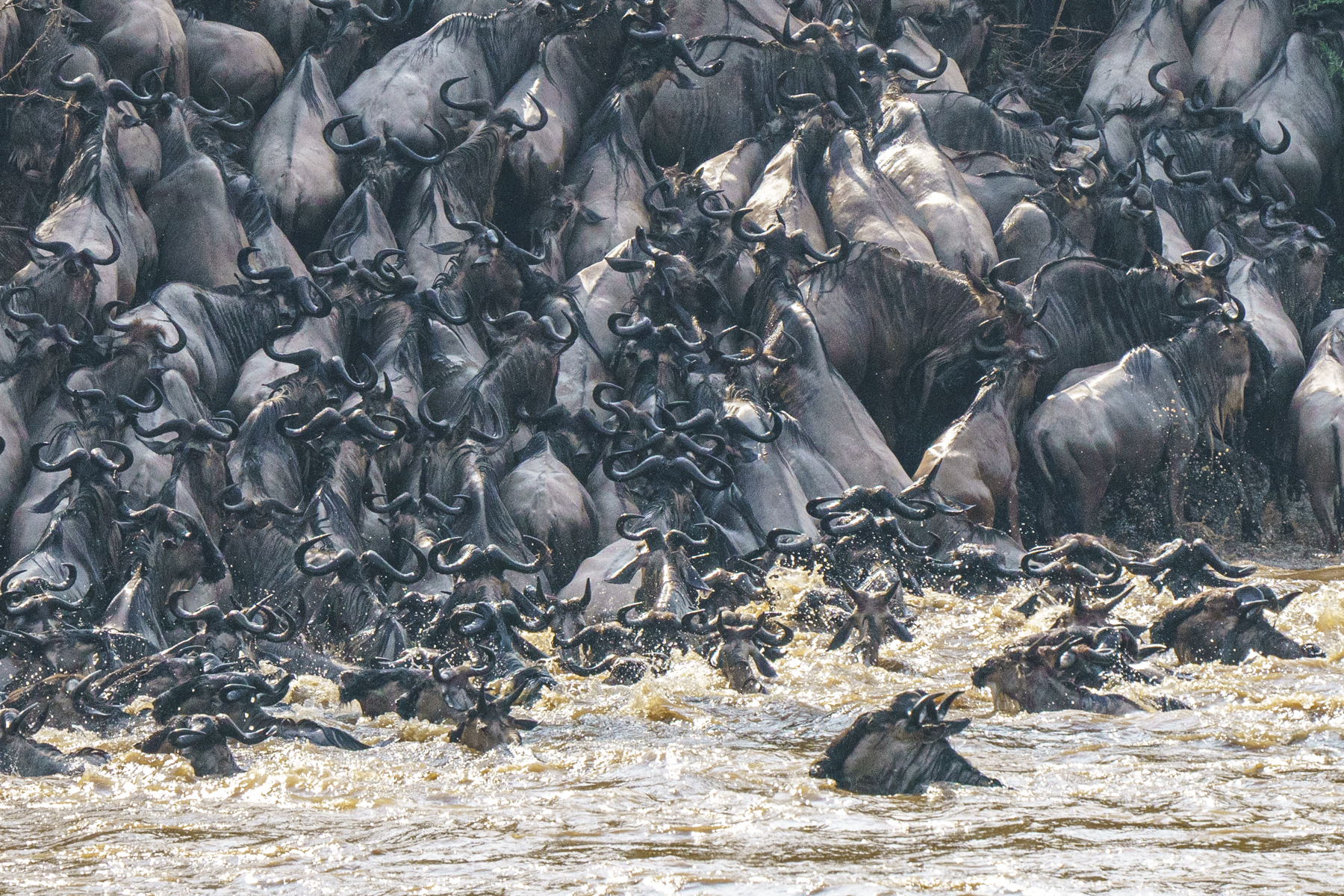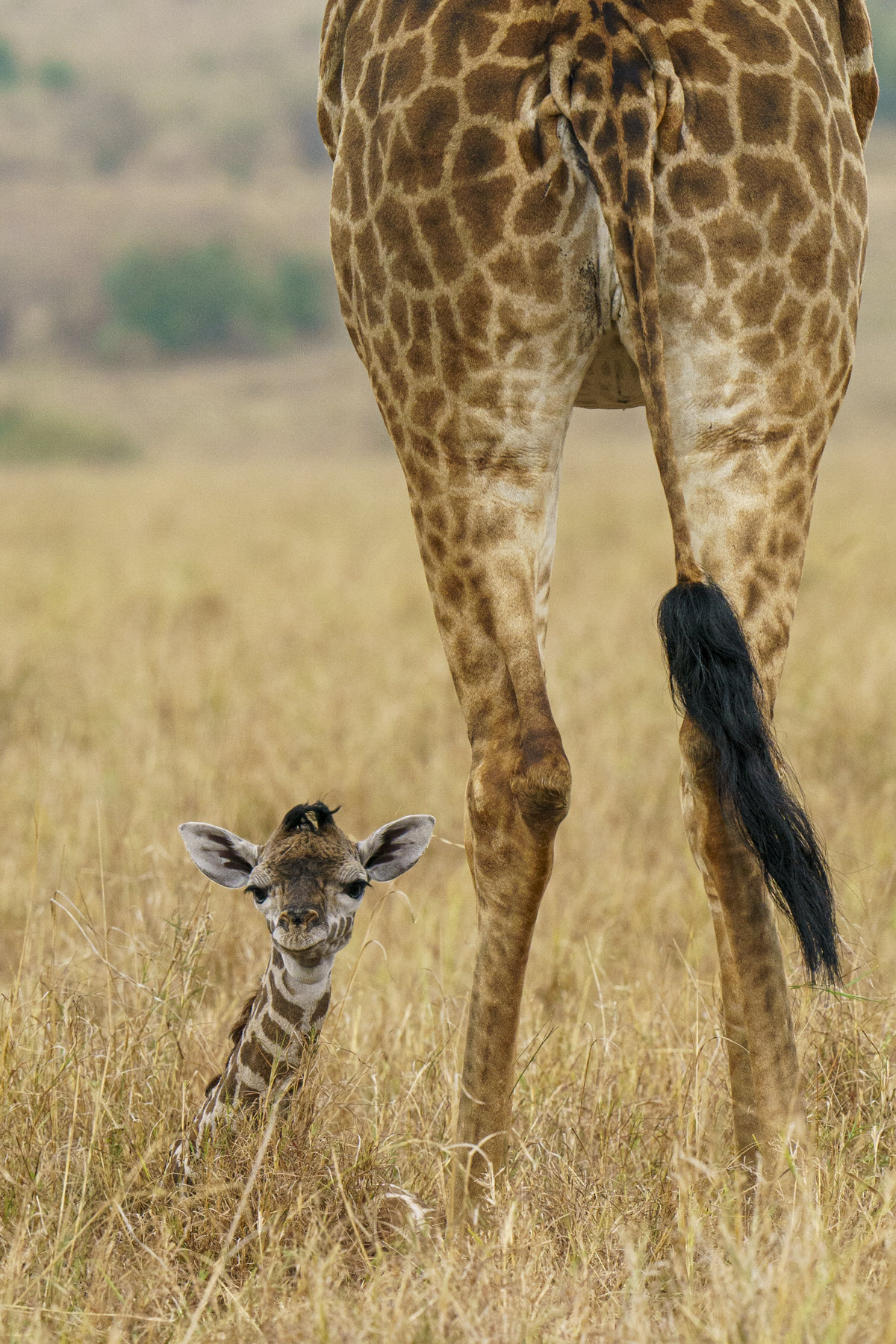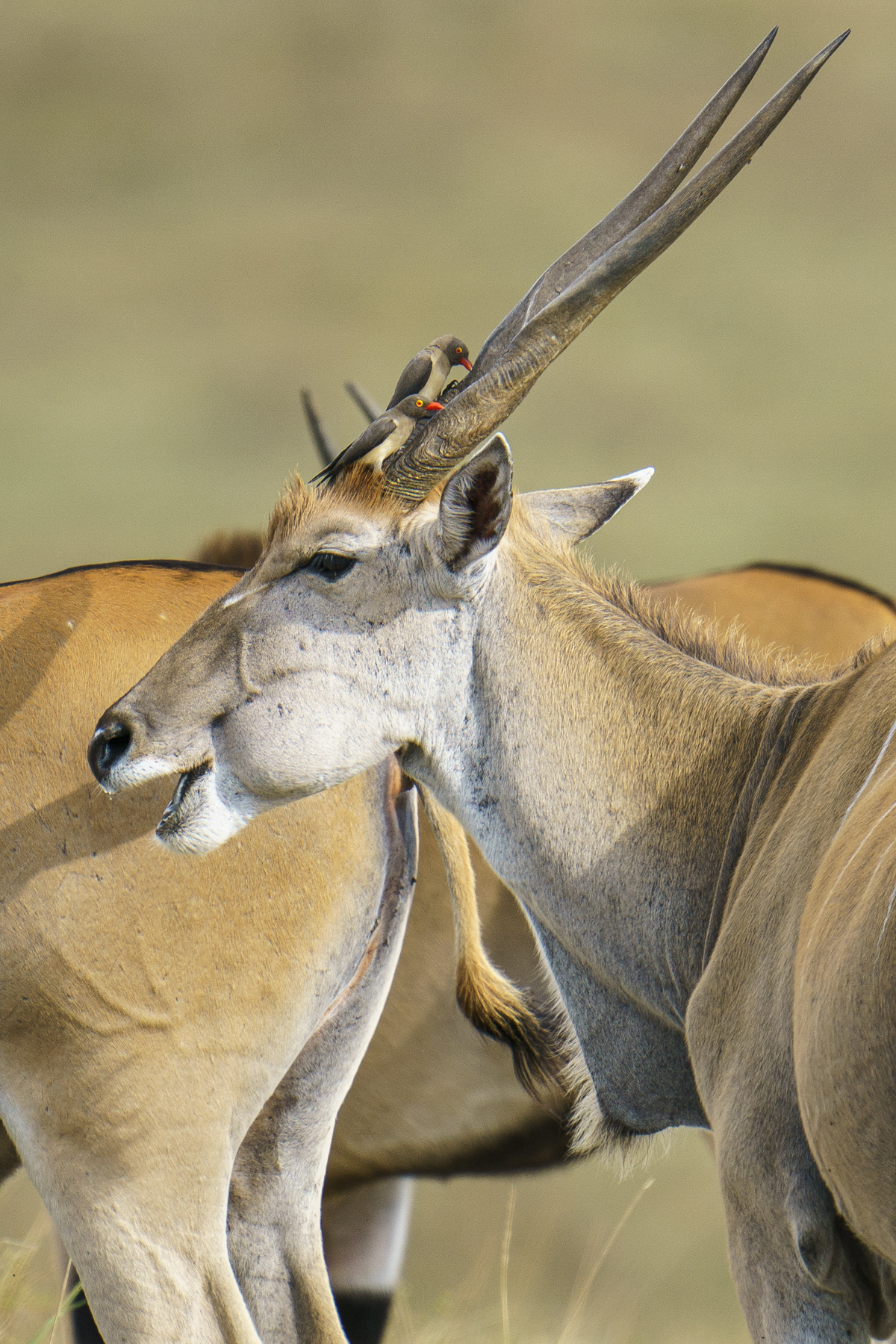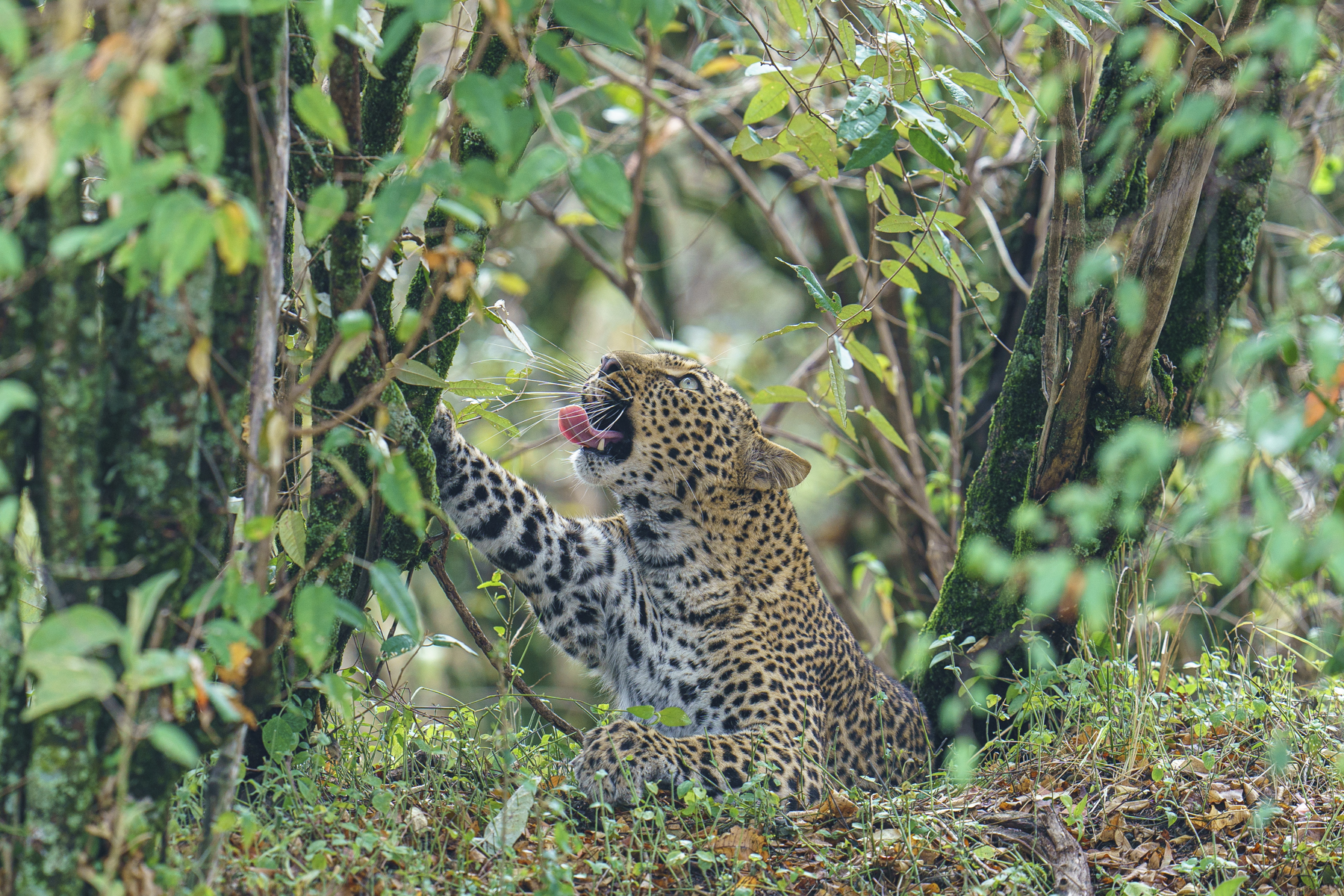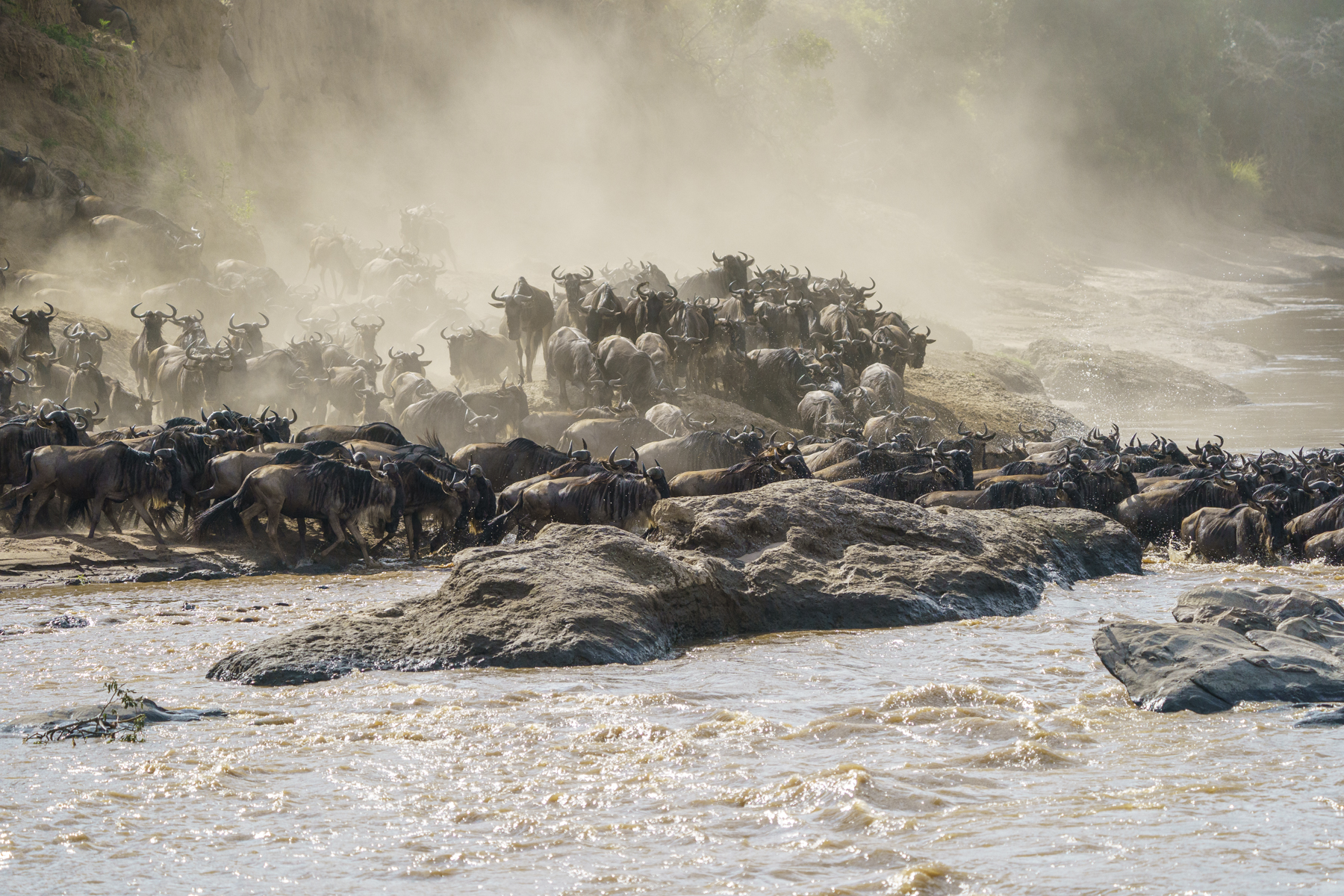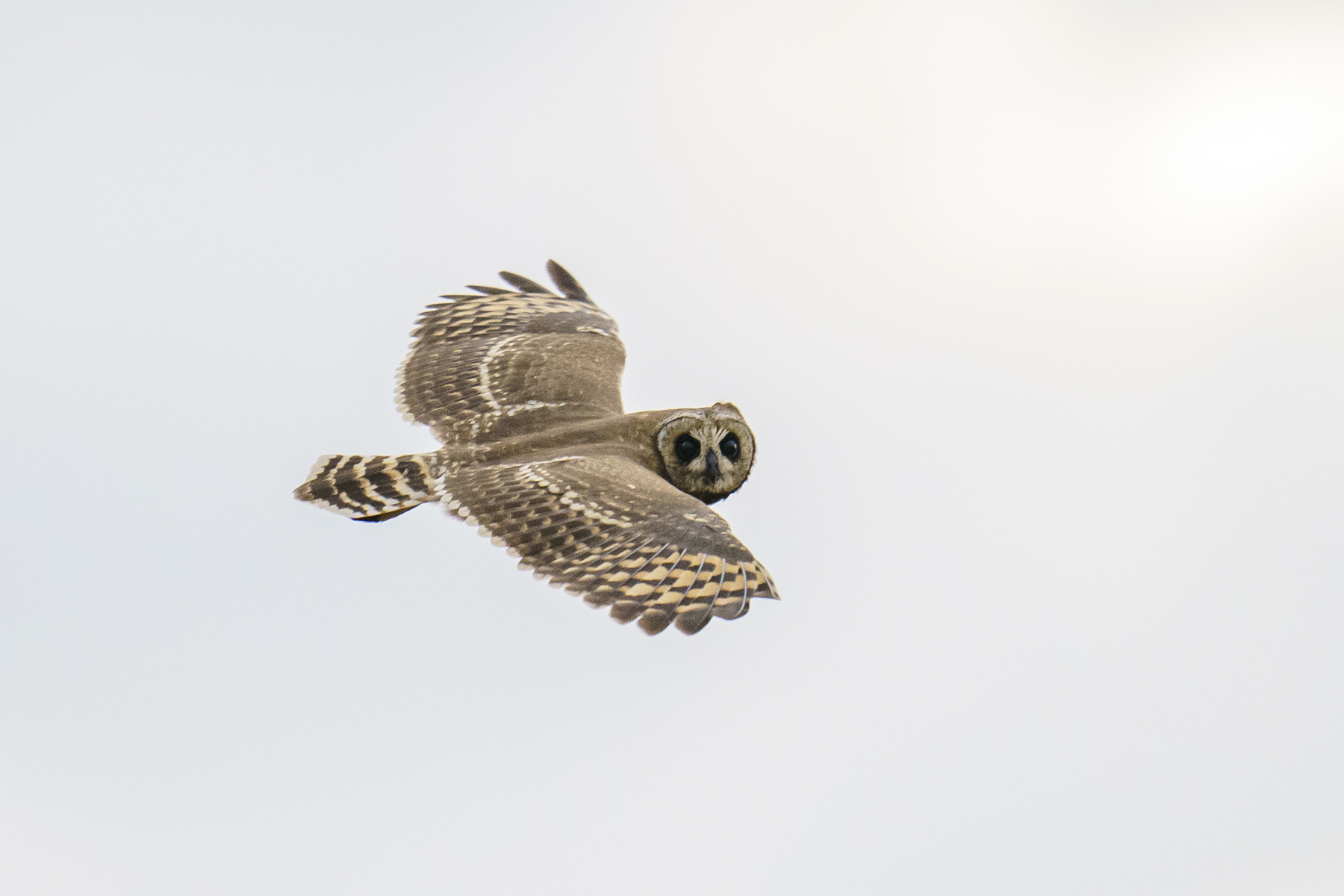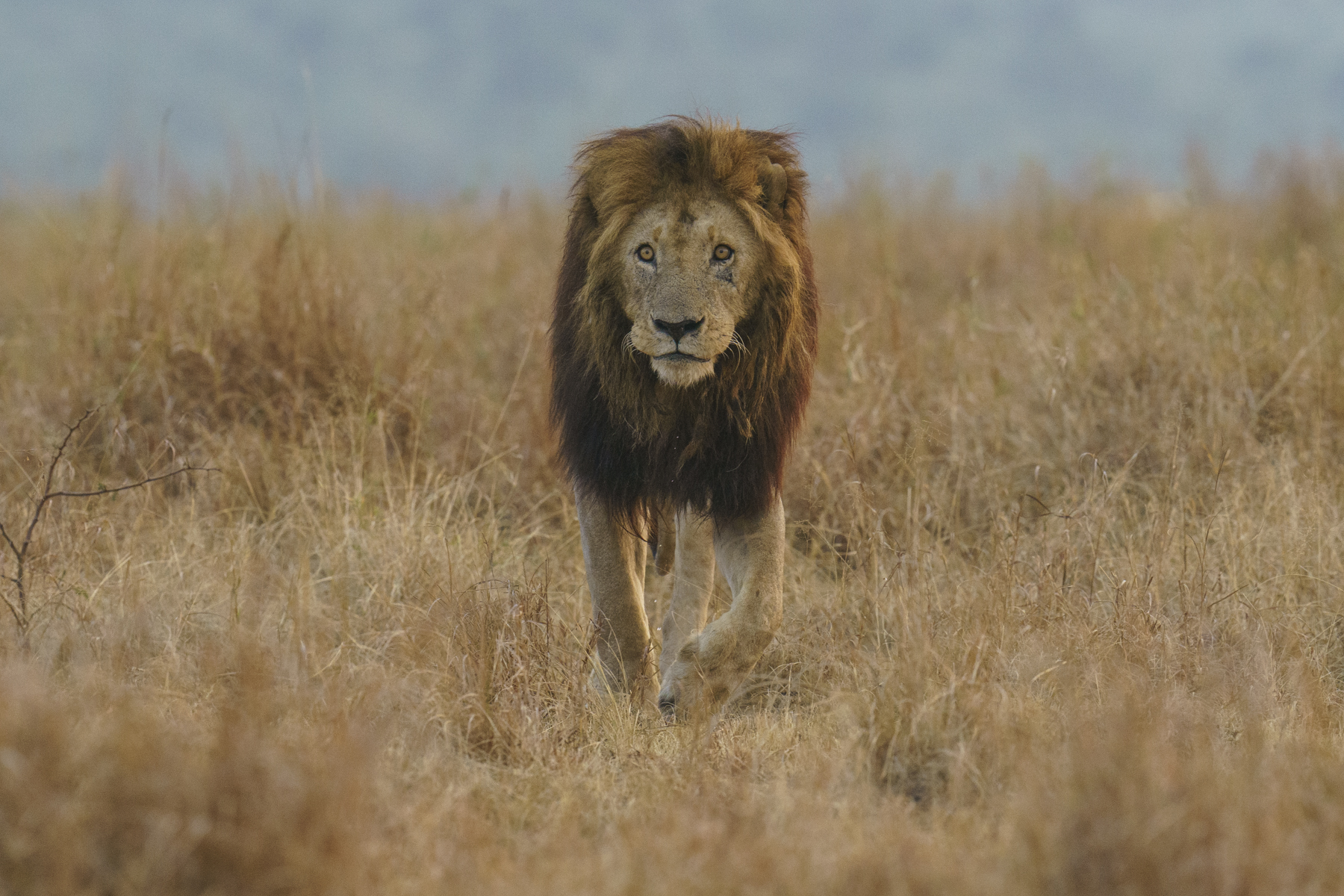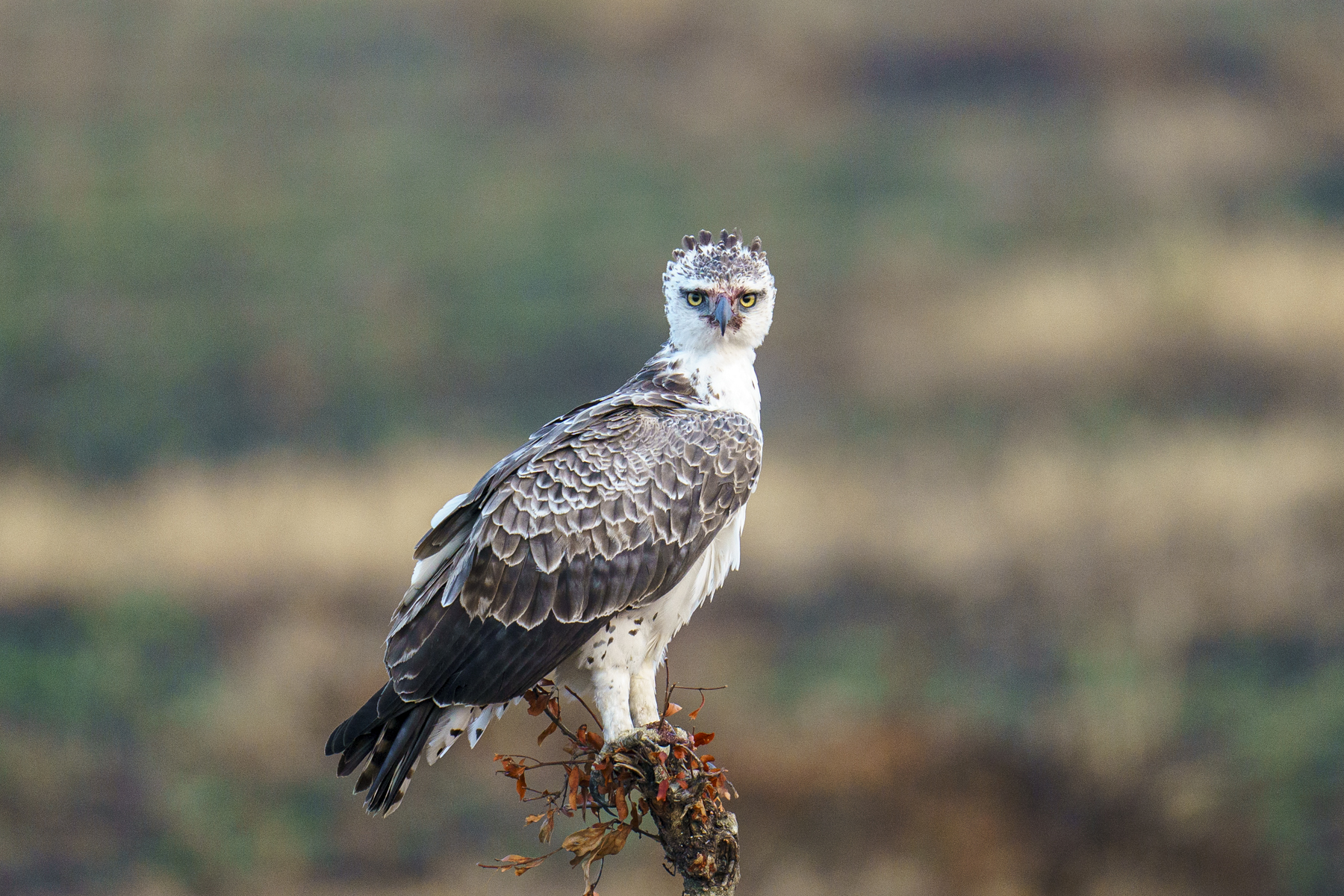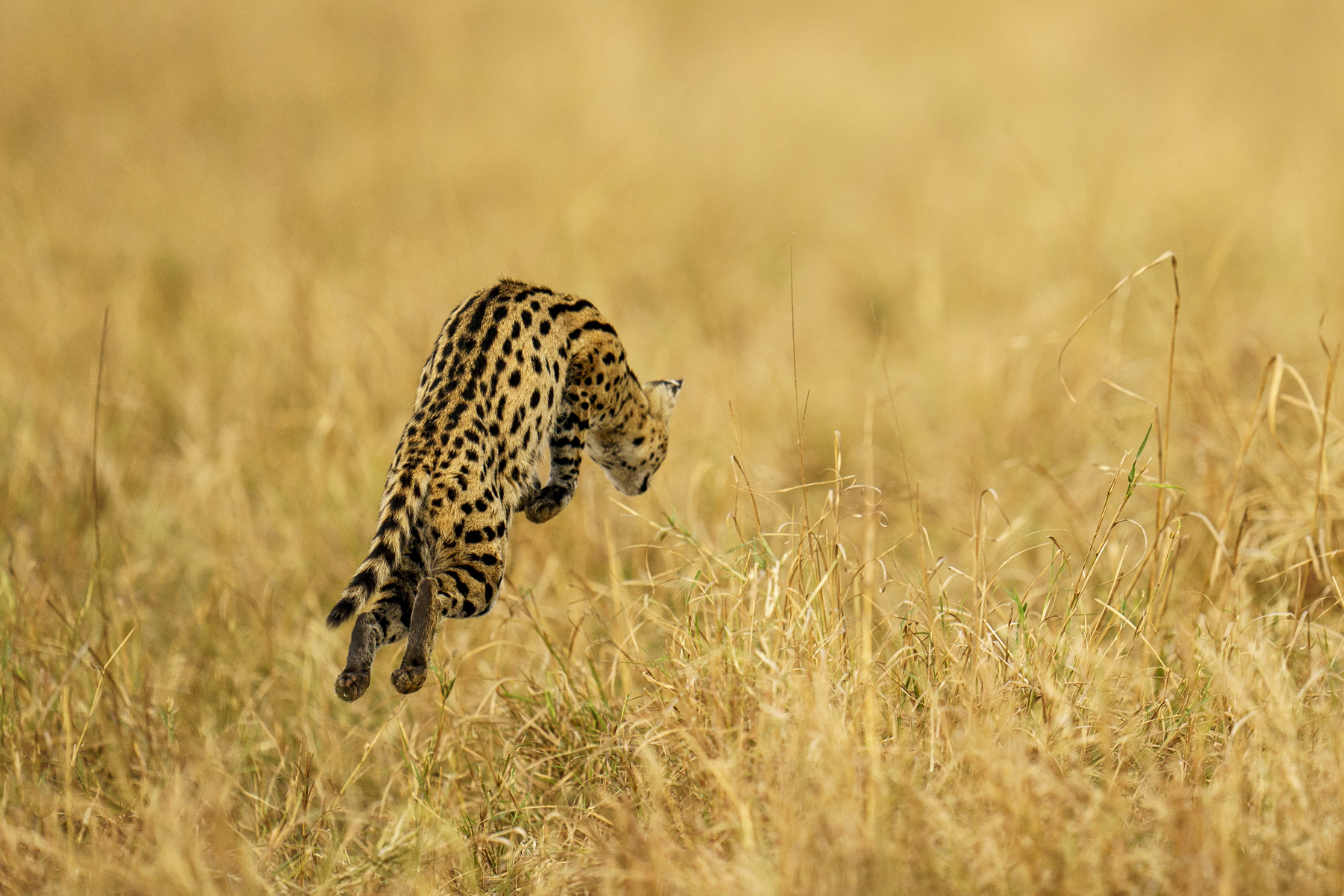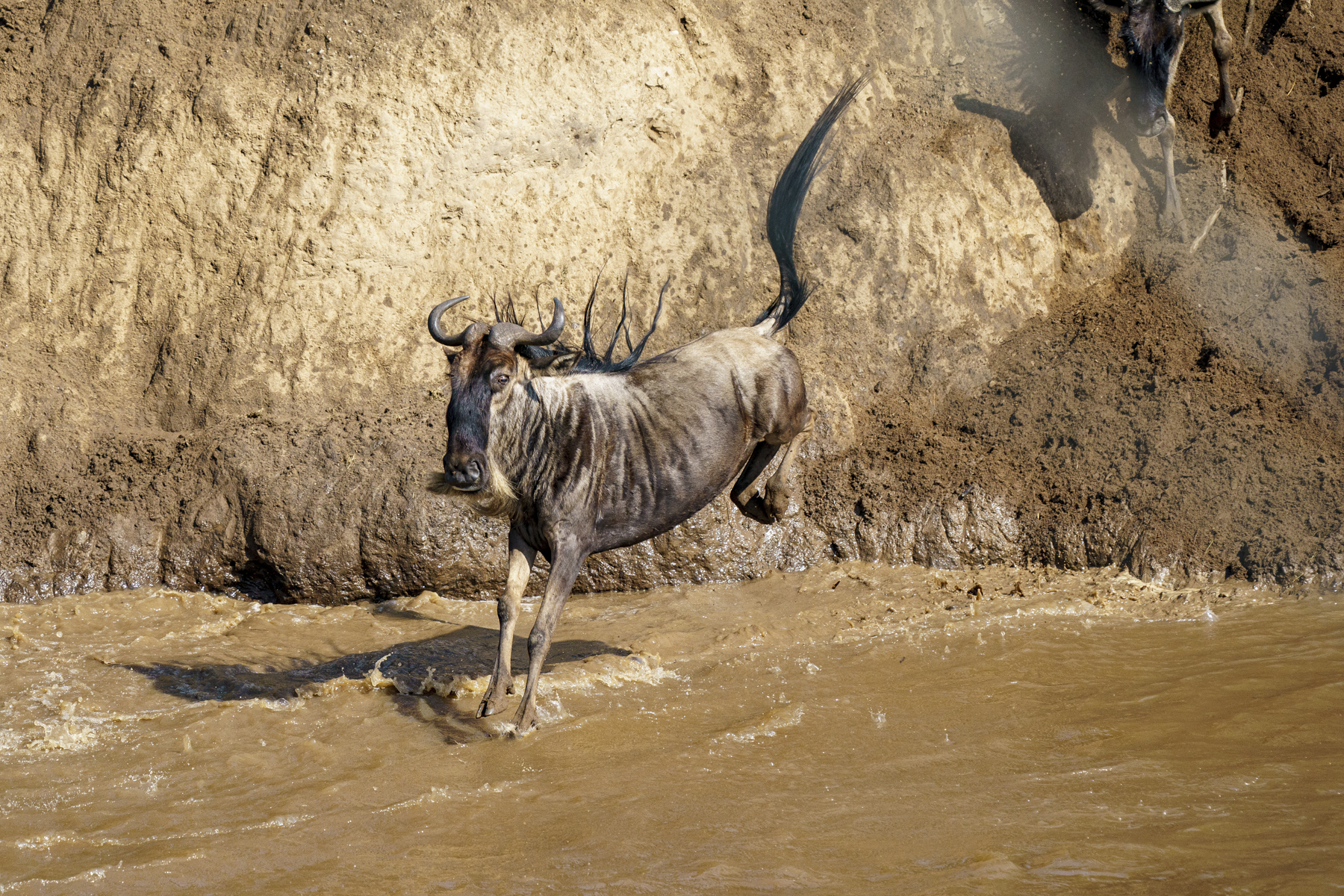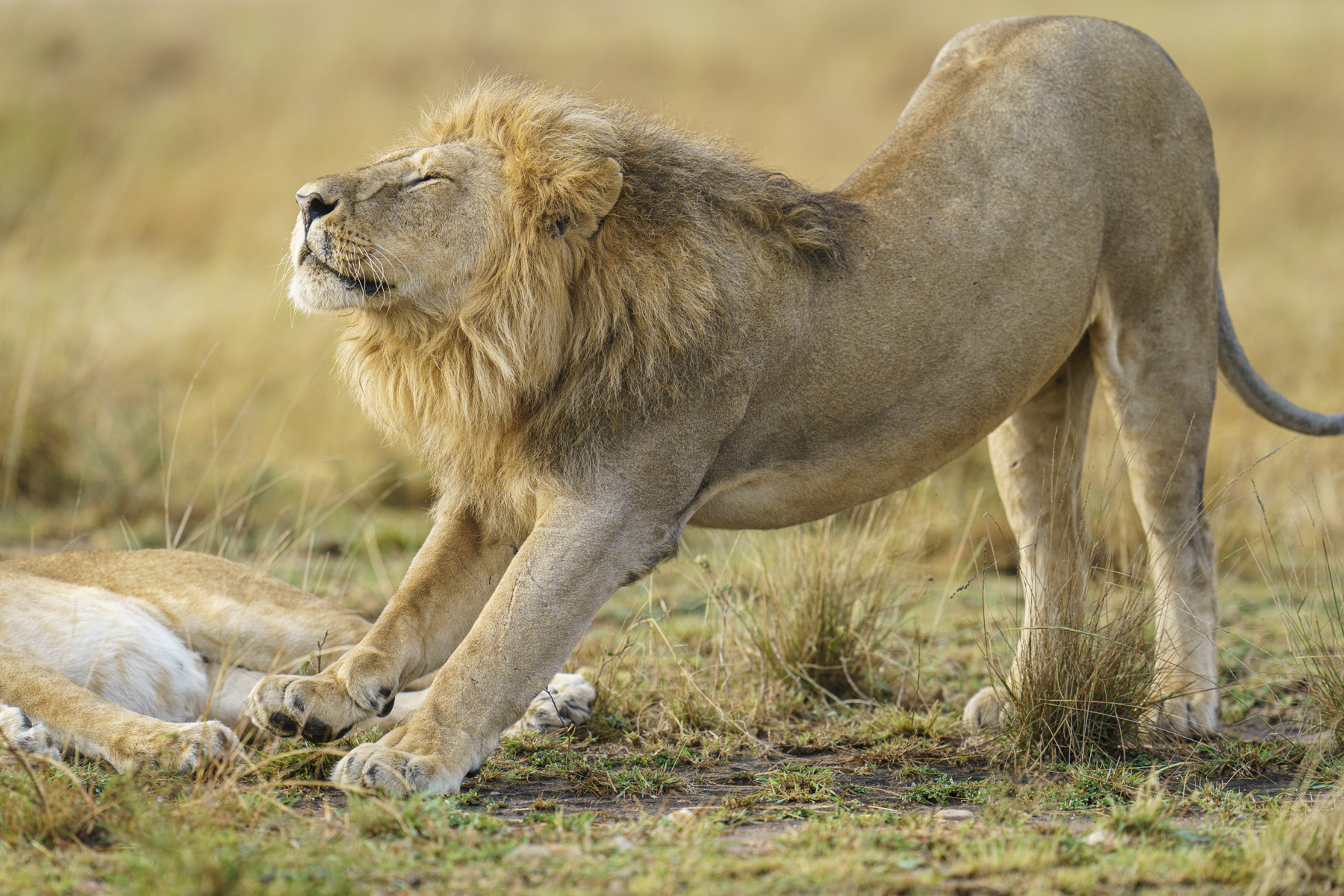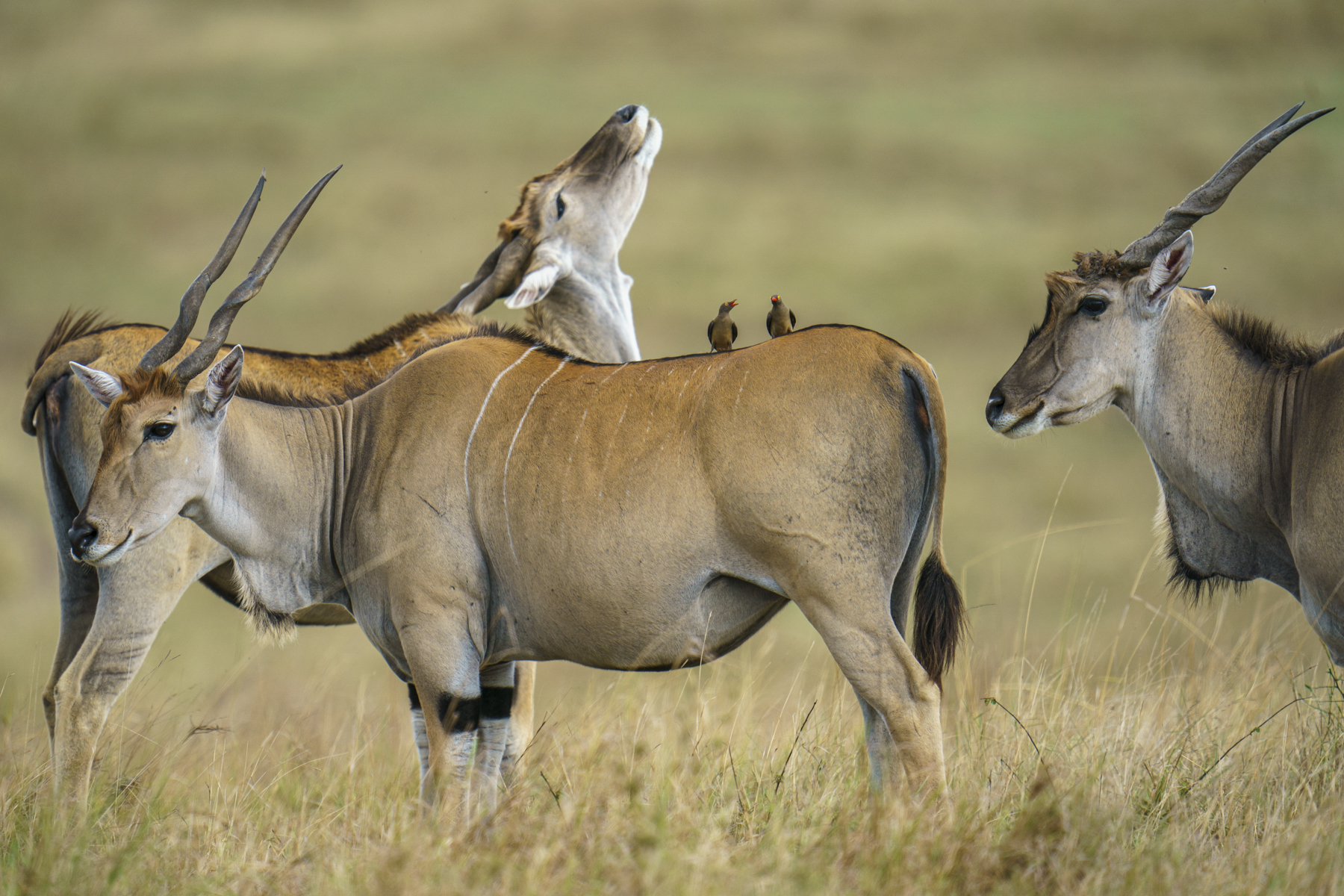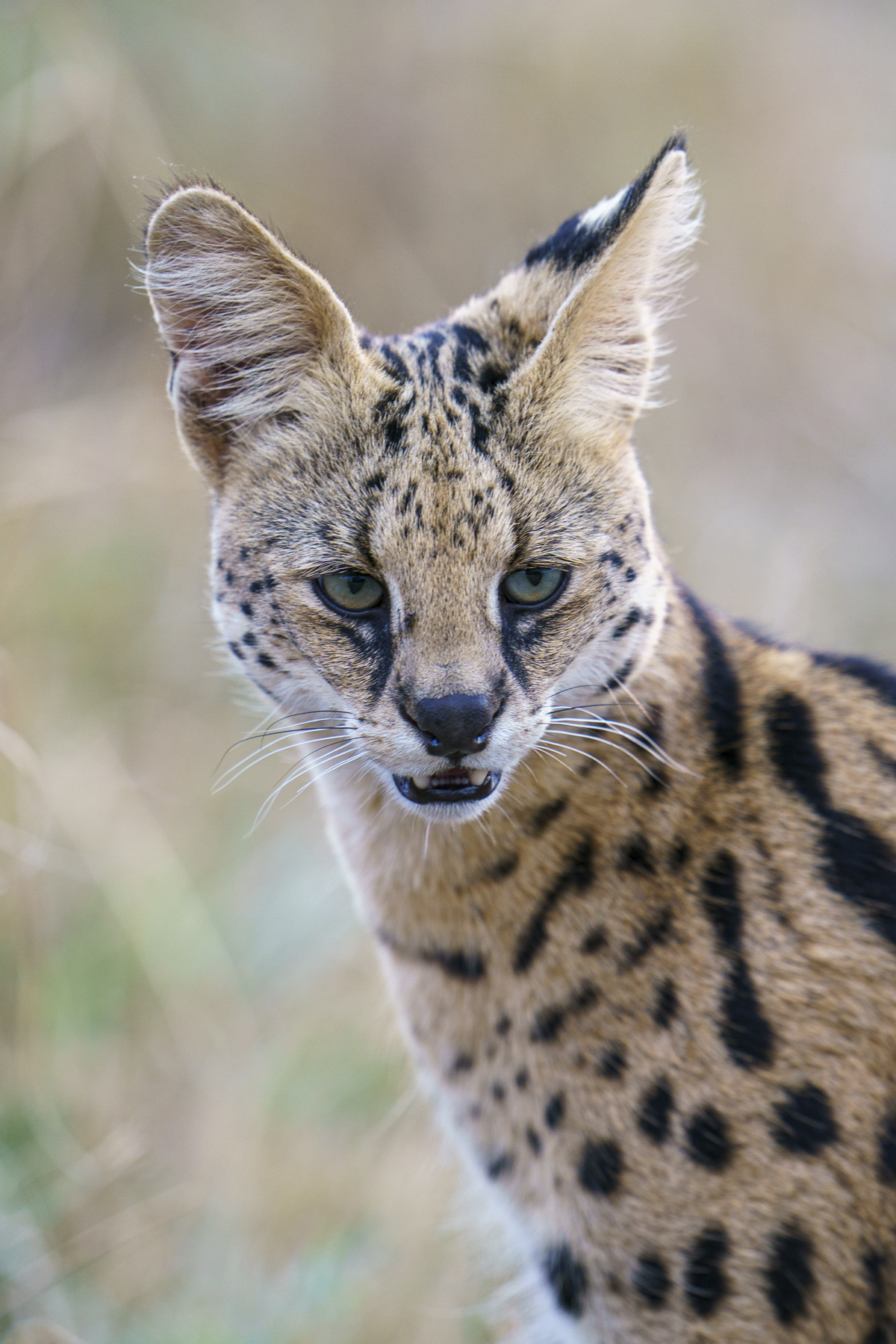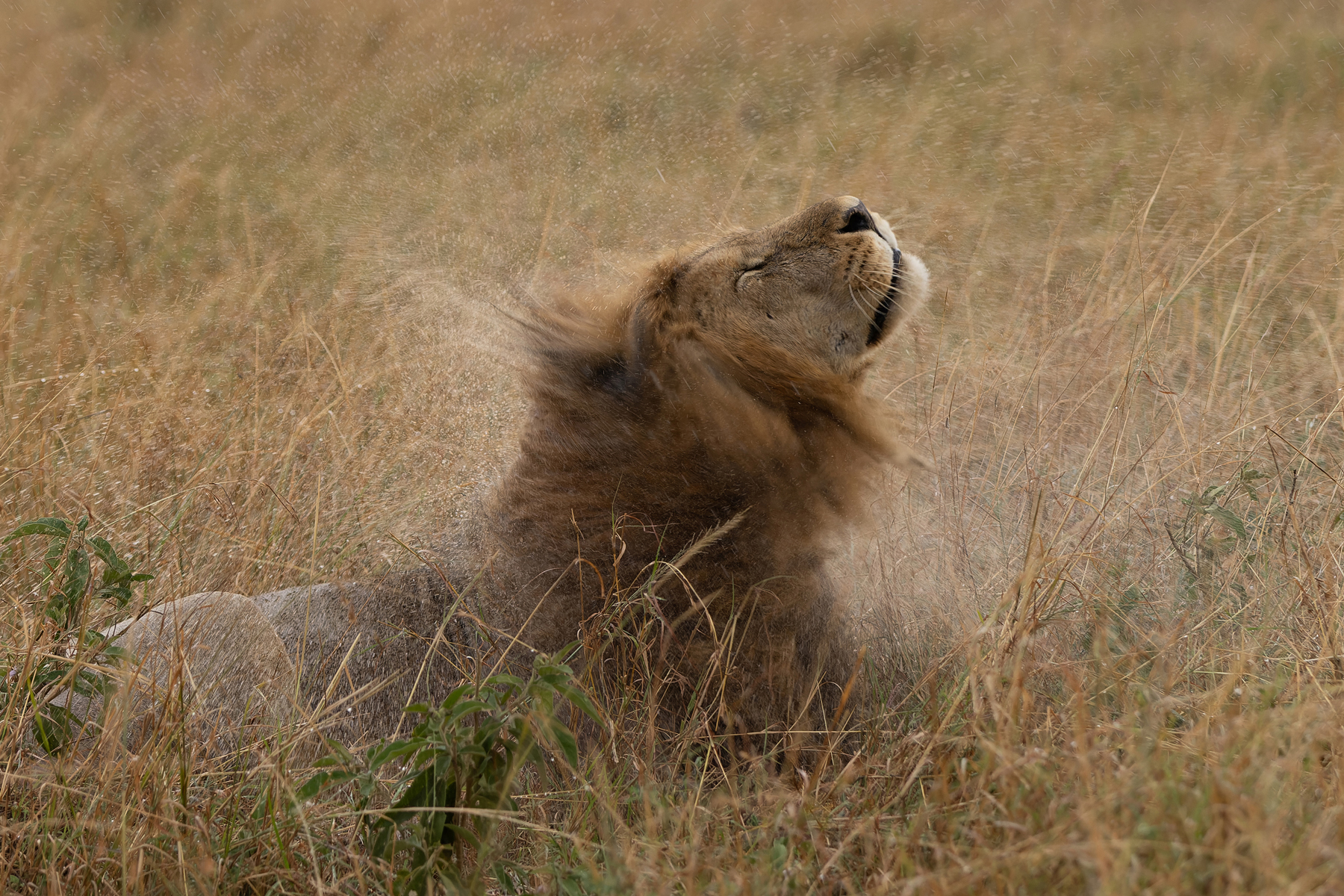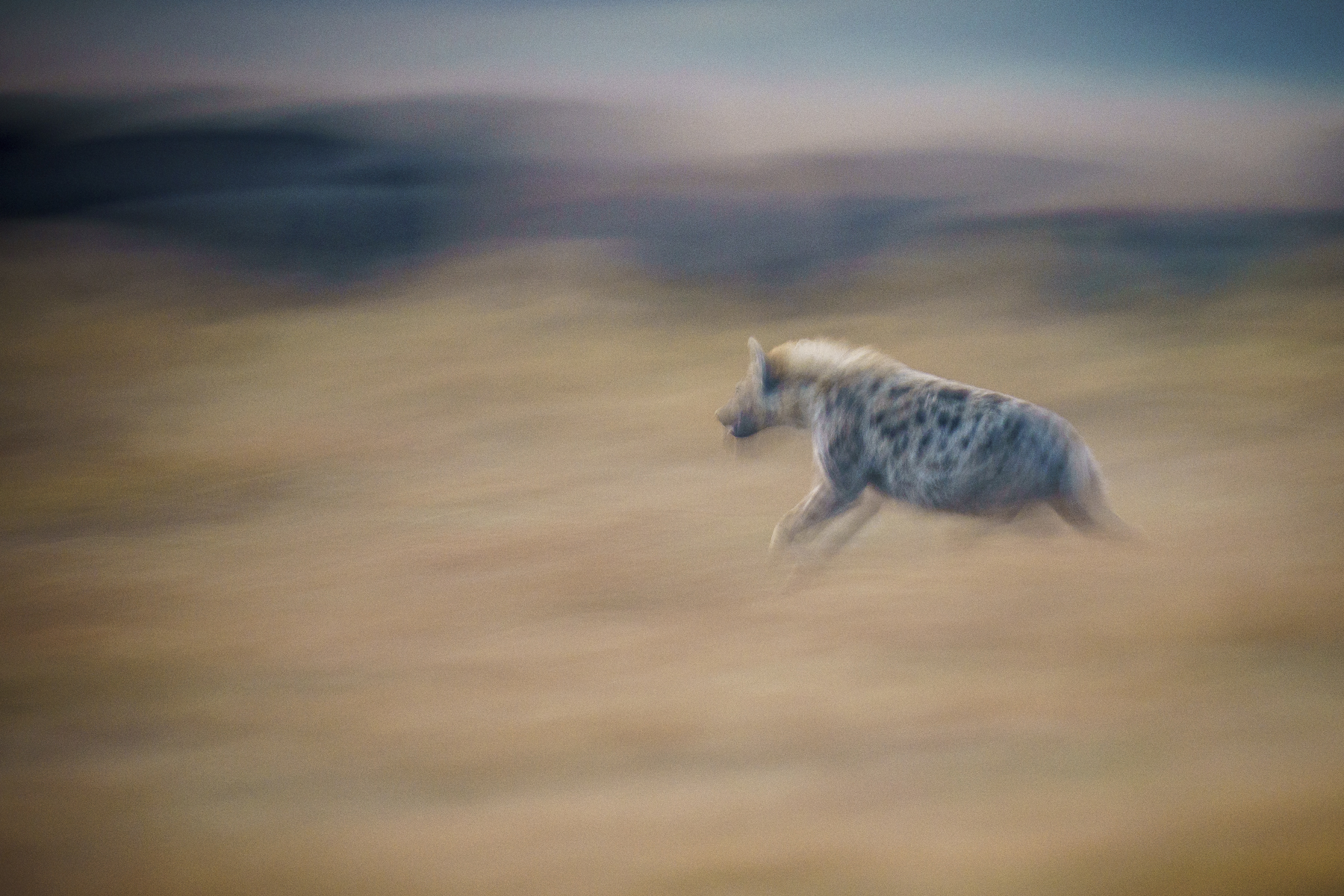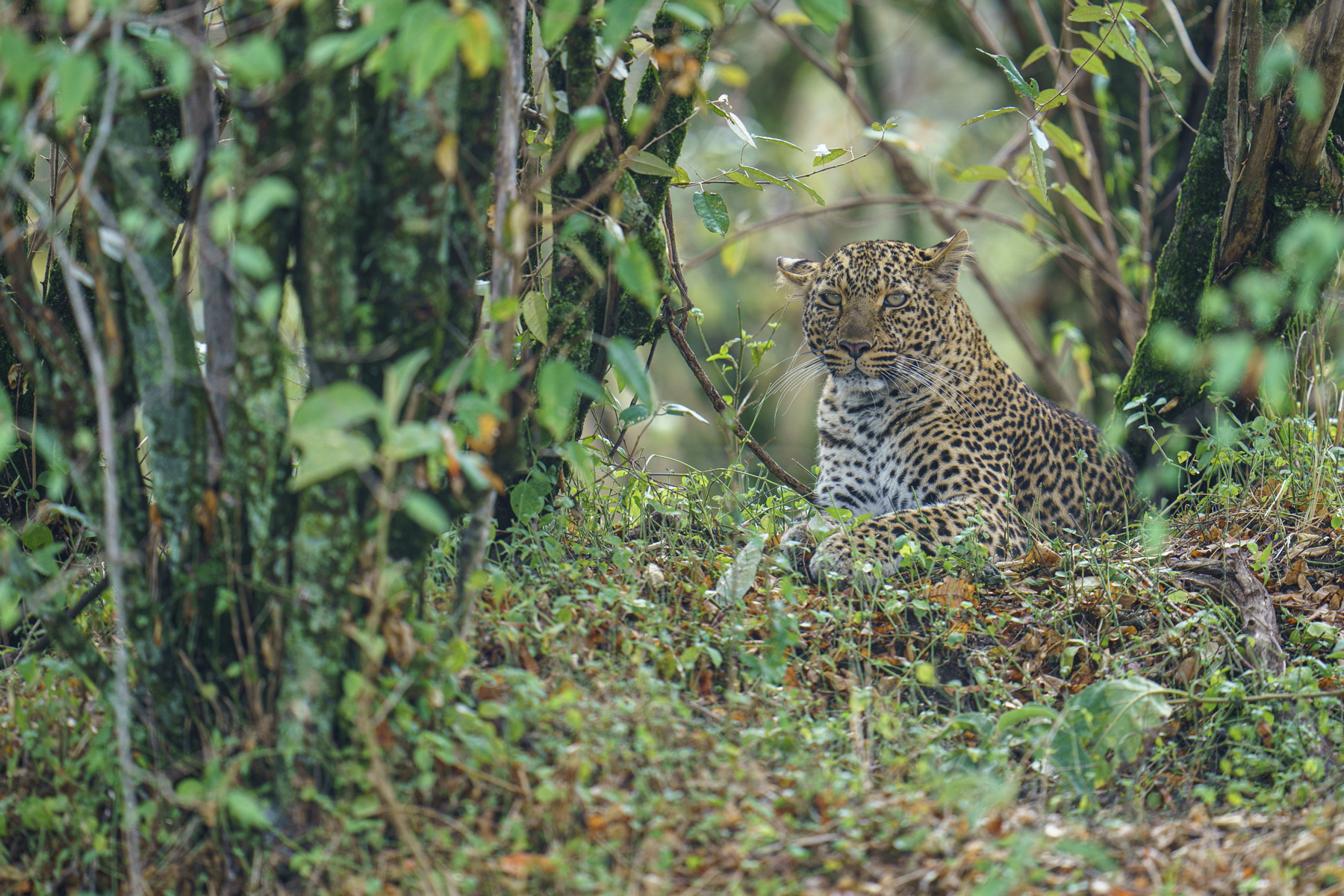Kenya
KENYA: MAASAI MARA MIGRATION SPECIAL – based at Entim, the best migration location in the Mara





































































































































































A silhouette of a giraffe at sunrise (image by Inger Vandyke)

A cheeky Lilac-breasted Roller rides a male Blue Wildebeest, a great perch for spotting insects (image by Mark Beaman)


When you cross you had better not stop! (image by Mark Beaman)

No room at the river: Common Zebras drink before a crossing (image by Mark Beaman)

Beautiful detail of a Common Zebra tail (image by Inger Vandyke)

Bahati takes a moment to pause during her evening hunt (image by Mark Beaman)

The huge wildebeest crossing at Entim on 20 August 2020 (image by Mark Beaman)

As part of 'The Three Musketeers' trio, Morane is great to photograph during our Maasai Mara Migration Special photography tours (image by Inger Vandyke)

Rüppell's Vultures fight while a Lappet-faced Vulture looks on (image by Mark Beaman)

Handsome Osapuk is one of the leading males of the Sala's Boys in the Mara (image by Inger Vandyke)

Capture the dust and drama of the great migration during our Kenya's Maasai Mara Migration Special photography tour (image by Inger Vandyke)

A lioness watches the sunset, with a storm rapidly approaching. Within minutes the rain was lashing down (image by Mike Watson)

Lines of Common Zebras and Blue Wildebeest wait to cross the Mara River during the Wild Images Maasai Mara Migration Special photography tour in Kenya (image by Inger Vandyke)

A dramatic crossing of the Mara River by wildebeest during the annual migration (image by Inger Vandyke)

Staying up all night roaring is tiring work (image by Mark Beaman)

A hunting Serval (image by Mark Beaman)

Handsome Olepolos with his belle (image by Mark Beaman)

A wildebeest succumbs to the back pressure of the herd and falls off a cliff into the Mara River (image by Inger Vandyke)

Here we go... Wildebeest at a crossing (image by Mark Beaman)

Spotted Hyena at sunrise. After the Lion, the greatest predator of the Maasai Mara (image by Mark Beaman)

Bahati is a Leopard that is completely unconcerned by safari vehicles (image by Mark Beaman)

A Cheetah is pure grace and power combined (image by Mark Beaman)

Capturing Hippopotamuses fighting in the river is a highlight of our Maasai Mara photography tours (image by Inger Vandyke)

Impalas rutting (image by Mark Beaman)

The Mara crossings are truly epic (image by Inger Vandyke)

Learn how to post-process animal portraits during our Kenya photography tours (image by Inger Vandyke)

A pair of Egyptian Geese greet the sunrise in the Maasai Mara National Reserve (image by Inger Vandyke)

A sea of horns as the Blue Wildebeest try to climb the steep banks of the Mara (image by Mark Beaman)

Helmeted Guineafowl (image by Mark Beaman)

Young Cheetah cubs are simply adorable, full stop (image by Mark Beaman)

The one-time 'Leader of the Pack', Scarface (image by Mark Beaman)

Just two days old and I have lost Mummy already! (image by Mark Beaman)

Morane roaring his defiance (image by Inger Vandyke)

An African Buffalo chewing the cud (image by Mark Beaman)

When simply walking across the river won't do, let's try to jump instead (Image by Inger Vandyke)

Learn how to capture stunning motion blur photos during our Kenya photography tours (image by Inger Vandyke)

Thomson's Gazelle (image by Mark Beaman)

The pretty Cavendish's Dik-Dik (image by Inger Vandyke)

Blue Wildebeest at sunrise (image by Mark Beaman)

Portrait of a Rüppell's Vulture (image by Inger Vandyke)

Often overlooked but plainly pretty, a Sooty Chat in the Mara (image by Inger Vandyke)

Learn how to photograph African Fish Eagles and other birds in flight on the Wild Images Kenya photography tours (image by Inger Vandyke)

Nashipae and one of her cubs look out over their domain (image by Mart Beaman)

Capture an image of a beautiful male Impala at sunrise on our Kenya photography tours (image by Inger Vandyke)

Lilac-breasted Rollers are a photography highlight during our Kenya photography tours (image by Inger Vandyke)

Olive Baboon (image by Mark Beaman)

Blue Wildebeest jumping into the Mara River (image by Mark Beaman)

Black-headed Heron (image by Mark Beaman)

Lost in a sea of stripes, a Common Zebra with its herd in the Mara (image by Inger Vandyke)

Golden hour Elephant (image by Mike Watson)

The crossings are spectacular, noisy and gut-wrenchingly impressive (image by Mark Beaman)

"Are you sure there's something edible up here?" Red-billed Oxpeckers on a Common Eland (image by Mark Beaman)

A two-day-old baby Giraffe stays close to its mother (image by Inger Vandyke)

Black-winged Lapwing, a typical denizen of the Mara plains (image by Mark Beaman)

Impalas and balloon (image by Inger Vandyke)

A wildebeest plunges off a Mara River cliff to join the herd below (image by Inger Vandyke)

Masai Giraffe and very young youngster (image by Mark Beaman)

Baby Hippopotamuses sleep surrounded by their older family members (image by Inger Vandyke)

Bella 2 takes a stretch and a yawn (image by Mark Beaman)

Even the Hamerkops feast on wildebeest meat during the Mara migration! (image by Mark Beaman)

Portrait of a zany Southern Ground Hornbill (image by Inger Vandyke)

Pesky cubs jump on their mother in the Topi pride of the Mara (image by Mike Watson)

A Lilac-breasted Roller perches on the back of a migrating wildebeest (image by Inger Vandyke)

Cute baby elephants playing around are fun to watch and photograph in the Mara (image by Inger Vandyke)

Female Cheetah Nashipae and her gorgeous young cubs (image by Mark Beaman)

Practice using negative space during the Wild Images Kenya's Maasai Mara photography tour. In this case with a Black-backed Jackal (image by Inger Vandyke)

Secretarybirds (image by Inger Vandyke)

Sometimes jumping down a cliff is the only option to cross the Mara River (image by Inger Vandyke)

Clouds of dust sometimes envelop a crossing (image by Mark Beaman)

When stormy skies bring rain, the most magical Mara photographic opportunities occur (image by Inger Vandyke)

Bahati picks up the pace. Those Impalas are close... (image by Mark Beaman)

The Bateleur eagle, lord of the savanna skies (image by Mark Beaman)

The crossings are spectacular, noisy and gut-wrenchingly impressive (image by Mark Beaman)

Horns (image by Mark Beaman)

Morane is such a beautiful lion (image by Inger Vandyke)

Temminck's Courser (image by Mark Beaman)

Then comes the long climb to safety, hoping no Lion or Leopard lurks... (image by Mark Beaman)

A beautiful Cheetah cub calls plaintively as her mother keeps watch (image by Inger Vandyke)

Shades of pink and purple greet the new day at the Maasai Mara National Reserve in Kenya (image by Inger Vandyke)

Blue Wildebeest crossing the Mara River (image by Mark Beaman)

Portrait of a Blue Wildebeest (image by Inger Vandyke)

A dreamy red sunrise in the Mara (image by Inger Vandyke)

Don't try chasing me you mangy hyena! (image by Mark Beaman)

Marsh Owl (image by Mark Beaman)

Oh! I do hate things flying overhead! (image by Inger Vandyke)

A Secretarybird, an aberrant raptor, in search of snakes and lizards (image by Mark Beaman)

Jump for your life! A wildebeest takes the plunge at the Mara River (image by Mark Beaman)

Up close and personal with Bella 2, one of the beautiful female leopards of the Maasai Mara (image by Inger Vandyke)

A lone elephant wanders across the plains of the Maasai Mara in Kenya (image by Inger Vandyke)

Secretarybirds at sunset (image by Inger Vandyke)

A baby giraffe watches on as its mother eats a Solanum bush on the plains of the Maasai Mara (image by Inger Vandyke)

Not all the wildebeest make it (image by Mark Beaman)

A lone wildebeest crossing the Mara River risks being taken by crocodiles (image by Inger Vandyke)

Dramatic skies crown the wildebeest crossing the Mara River (image by Inger Vandyke)

The fear and frenzy of the crossing (image by Mark Beaman)

A female and calf Black Rhinoceros, with attendant Red-billed Oxpeckers, watch as a baby Giraffe ambles past (image by Mark Beaman)

In we go... (image by Mark Beaman)

A wildebeest leaps into the Mara River (image by Inger Vandyke)

Servals are some of the most agile cats on Earth (image by Mark Beaman)

With his dark mane, Morane is one of the most handsome Lions in the Mara (image by Mark Beaman)

A wildebeest is forced to jump from a cliff by sheer pressure of numbers (image by Mark Beaman)

Common Zebra duo (image by Mark Beaman)

Pretty little Coqui Francolins are sometimes overlooked on photography tours of the Maasai Mara (image by Inger Vandyke)

The cliffs of the Mara River are dangerously steep! (image by Mark Beaman)

Damn, I missed... (image by Mark Beaman)

Young lions devour the carcass of a zebra, including its tail, in Kenya's Maasai Mara National Reserve (image by Inger Vandyke)

Martial Eagle (image by Mark Beaman)

Sky on fire! Probably the most dramatic of the many spectacular sunsets we saw on the Mara (image by Mike Watson)

Any shortcut is worth trying during a crossing (image by Mark Beaman)

Stormy skies and rain showers trigger local movements of wildebeest even as they make the greatest migration on earth (image by Inger Vandyke)

Being a lion cub is a tiring business (image by Inger Vandyke)

A pretty Serval watching for prey at dusk (image by Inger Vandyke)

Just a small part of the huge wildebeest crossing at Entim on 20 August 2020 (image by Mark Beaman)

A Serval leaps into the air as it tries to pounce on an African Grass Rat (image by Mark Beaman)

Cheetah yawn (image by Inger Vandyke)

Blue Wildebeest or Brindled Gnu (image by Mark Beaman)

A Lappet-faced Vulture comes in to land (image by Inger Vandyke)

Even when you get to the other side, a new ordeal awaits... (image by Mark Beaman)

A herd of impalas in the thin early morning mist of the Mara (image by Inger Vandyke)

Lappet-faced Vulture, the lord of the carcass (image by Mark Beaman)

A herd of wildebeest watch as a single animal plunges off a cliff at the Mara River (image by Inger Vandyke)

The fear and frenzy of the crossing (image by Mark Beaman)

Woolly-necked Stork (image by Mark Beaman)

A Blue Wildebeest leaping into the Mara River (image by Mark Beaman)

Olepolos, one of the Sala's Boys, stretches after a cat nap (image by Mark Beaman)

Cheetah (male) (image by Mark Beaman)

Angry hippo rounds on the Topi pride of lions who had cornered it in a small water hole on the plains near Rhino Ridge (image by Mike Watson)

Red-necked Spurfowl (image by Mark Beaman)

A wildebeest plunges off the riverside cliffs (image by Inger Vandyke)

The huge wildebeest crossing at Entim on 20 August 2020 (image by Mark Beaman)

Time for a wash, baby (image by Mark Beaman)

The icy stare of a lioness on her kill (image by Inger Vandyke)

Blue Wildebeest swimming the Mara River (image by Mark Beaman)

"Did you hear the one about the Dopey Topis?" "No, do tell!" Red-billed Oxpeckers and Common Elands (image by Mark Beaman)

The beautiful Serval (image by Mark Beaman)

Morane taking a rest (image by Inger Vandyke)

This male Lion is called Mrefu, a son of the famous Scarface. What to do in the rain? Wait for a head shake! (image by Mike Watson)

Up close and personal with a beautiful Cheetah during a Wild Images Kenya photography tour (image by Inger Vandyke)

Silhouetted wildebeest at sunrise (image by Inger Vandyke)

Blue Wildebeest portrait (image by Inger Vandyke)

An African Hawk Eagle takes flight in the Maasai Mara National Reserve of Kenya (image by Inger Vandyke)

Young wildebeest are frisky and agile (image by Mark Beaman)

Lioness profile (image by Mark Beaman)

Elephants make great black and white subjects on our Kenya photography tours (image by Inger Vandyke)

Made it! Wildebeest scramble up onto the rocks after a Mara crossing (image by Mark Beaman)

A tiny baby Warthog with its mother (image by Inger Vandyke)

Often, wildebeest are injured, sometimes fatally, in falls during crossings of the Mara River, but amazingly this one was unhurt! (image by Inger Vandyke)

A lone elephant crosses the plains after his mud bath (image by Inger Vandyke)

Scarface has had a long and hard life, even for a male Lion (image by Mark Beaman)

A young Rüppell's Vulture comes in to land at a carcass (image by Mark Beaman)

Morane on the prowl, soon after dawn (image by Mark Beaman)

Orkitok, 'the boss' of the Sala's Boys, approaches (image by Mark Beaman)

Yellow-billed Oxpecker in a stripey world (image by Mark Beaman)

Mara sunrise (image by Mark Beaman)

A sea of horns (image by Mark Beaman)

Spotted Hyena blur (image by Mark Beaman)

Dust and hooves on a Mara River crossing (image by Inger Vandyke)

Blue Wildebeest at Blue Hour in the Mara (image by Inger Vandyke)

The crossings of the Mara are a frenzy of life (image by Inger Vandyke)

Feeling the full force of a storm on the Maasai Mara (image by Mike Watson)

Bella 2 in her leafy nest (image by Mark Beaman)

Secretarybirds courting (image by Mark Beaman)
|
Sunday 7th September –
Monday 15th September 2025 Leaders: Virginia Wilde and highly skilled local naturalist driver-guides |
9 Days | Group Size Limit 7 |
|
Monday 7th September –
Tuesday 15th September 2026 Leaders: Virginia Wilde and highly skilled local naturalist driver-guides |
9 Days | Group Size Limit 7 |
KENYA: MAASAI MARA MIGRATION WILDLIFE PHOTOGRAPHY TOURS WITH WILD IMAGES
Our inaugural Wild Images ‘Migration Special’ in Kenya’s Maasai Mara in August 2020 not only lived up to all expectations but greatly exceeded them! The Blue Wildebeest crossings were unusually numerous that August and included a truly epic Mara River crossing of over 50,000 individuals right at our camp at Entim! We have been sending groups to stay at the well-appreciated Kicheche Bush Camp in the Mara’s Olare-Motorogi Conservancy for some years, which is a truly superb place for photographing big cats and other wildlife, but if you want to see the awesome wildebeest and zebra crossings during the migration from July to October, staying on the Mara River, inside the Maasai Mara National Reserve, is a must, and Entim is the best-positioned camp of all for experiencing the crossings.
In the Maasai Mara National Reserve, we will be based at famous Entim, a luxury safari camp (more like a luxury lodge in quality and spaciousness, with huge fixed sleeping tents with private bathrooms and a wonderful, spacious dining and lounge area overlooking the Mara River). For those who want to witness the awesome wildebeest crossings of the Mara River, Entim has the very best location of any camp in the Mara, being spectacularly situated beside the river with a famous crossing point right beside the camp! We have witnessed up to 50,000 or more wildebeest crossing at a time at Entim, flowing like a river of life from one side of the river to another. What could be more spectacular than that, and right where we are staying?!
It does cost more to stay in such luxurious safari camps, for the very reason that they are both very comfortable and have the prime settings in Kenya’s Maasai Mara National Reserve, where all the famous crossing points are situated. Most of the camps and lodges in the Maasai Mara National Reserve, let alone those in the surrounding Mara Conservancies (for example, Mara North, Mara Olare-Motoropgi and Naboisho) are far too distant from the Mara River crossing points. Instead of having just 10-40 minutes to drive to a crossing, you have up to 2 hours or more one-way! By the time you even hear about a likely crossing, it is too late. Most times the wildebeest and zebras will be across the river before you even get there. In our view if you want to have a truly special ‘Mara Migration’ experience, this is the way to go: you have to stay at Entim or one of a tiny number of other strategically-situated camps east of the river, and Entim with its crossing on-site is the best-placed of all. (The Mara Triangle accommodations are less well-sited, in our view, as access to the river banks is much more restricted on the west bank of the Mara.)
Imagine the vast expanses of the Maasai Mara stretched out before your eyes. An incredible plain, contiguous with the much larger Serengeti ecosystem in Tanzania, that is home to one of the largest wildlife migrations on earth, the annual Blue Wildebeest migration. At its peak in August–September over a million Blue Wildebeest make their way across the Mara, joined by up to 200,000 Common Zebras to form what is undoubtedly the greatest wildlife spectacle on earth!
A migration special is not a conventional photo safari where there is little pressure and you just wander about trying to find this or that subject: the crossings are the absolute number one priority, and deservedly so as they truly are ‘The Greatest Wildlife Spectacle on Earth’. I prefer this description to the commonly quoted ‘The Greatest Show on Earth’ – these brave, determined creatures are not putting on a ‘show’ for us, but participating in the greatest drama of the East African plains as they migrate between their calving grounds in the southeastern Serengeti and the lush grasslands of the Maasai Mara and northern Serengeti. It is an epic journey that all must make, and many die in the process.
At a typical Mara crossing there is a build-up of several thousands (or more) of Blue Wildebeest and a few Common Zebras on one bank of the Mara. Sometimes the animal numbers build up slowly, with columns of wildebeest marching to the river, but on other occasions, the gathering is more frenzied, with thousands charging to the banks. They may hesitate before crossing (even for a couple of hours or more), or they may immediately plunge down the banks, or leap from the earthen cliffs, and start to cross the Mara River. Large crossings are a pandemonium of hooves, legs, faces and horns, complete with a deafening cacophony of lowing and grunting voices! As the stream of animals reached the edge of the water, some just waded in while others take great leaps, ending in sheets of spray, as they tried to shorten the crossing time and the length of exposure to the ever-waiting crocodiles! A sea of faces and bobbing horns heads for the far bank, where the vanguard is already scrabbling up the banks or cliffs, anxious to clear the gullies and bushes, where Lions and Leopards often lurk, and regain the open grasslands. Huge Nile Crocodiles lie in wait for the stragglers. Eventually, the bedlam subsides and you feel half numb from the sheer awesome spectacle you have just witnessed, and also have a numb trigger finger from the hundreds of images you will surely have shot!
While the crossings are the most important focus of this tour, there will be plenty of time for other wildlife encounters. Sometimes there are no crossings for several days. In any event, early mornings and late afternoons are typically without crossings, so we can concentrate on predators or their prey while the light is at its best.
Typically we will go out before dawn, after early morning coffee or tea and biscuits, and take a picnic breakfast (perhaps to be eaten under one of those charismatic flat-topped acacias). We return in the late morning. After lunch, there is time for a siesta, or photo reviews, or one one-on-one tuition from our leader. We go out again when the light improves in the late afternoon, returning to camp not long after sunset. On occasion, if the animal movements require, we may take a picnic lunch and stay out all day.
The Maasai Mara is home to an abundance of wildlife other than wildebeest and zebras, including African Elephants, Masai Giraffes, a great variety of antelopes and African Buffalos, making it a photographer’s and naturalist’s paradise. Lions are positively numerous, Cheetahs and Leopards are frequently encountered, Servals are regularly sighted, Black Rhinoceroses can be still be found in the reserve’s bushland and rafts of Hippopotamuses plus enormous Nile Crocodiles are numerous in the Mara River. Common Warthogs abound and antelopes include the stately Common Eland, Defassa Waterbuck, Impala, Thomson’s and Grant’s Gazelles, and the sweet-little Steinbuck and Cavendish’s Dik-dik. Other common critters include Spotted Hyena, Black-backed Jackal, Olive Baboon and Banded Mongoose.
The Mara also has over 450 resident bird species, including plenty of vultures, other birds of prey, storks and others.
Is the Mara River Migration Spectacle the right photo safari for you?
The crossings of the Mara River in Kenya are an awesome, unforgettable spectacle, but a ‘migration special’ is not for everybody. We want you to enjoy this very special safari, so please bear in mind the following:
- The great migration of the two million wildebeest around the Serengeti-Mara ecosystem in Tanzania and Kenya is the last great mammalian migration on earth, but there are many casualties along the way. It is all part of the wheel of life after all. You are sure to witness animals being taken by crocodiles, being trampled and drowned in the crush or injure themselves as they plunge down the earth cliffs that skirt the Mara prior to crossing (to become prey to Lions, Leopards and Spotted Hyenas).
- It is often necessary to hurry to a potential crossing, as news comes in. Mara tracks are rough, so a bumpy ride cannot be avoided. If you have back or neck issues, you should bear this in mind.
- As this is a migration special safari, less time with other, more usual, safari subjects is inevitable, although there will still be plenty of opportunities in between going for the crossings.
- Waiting for the wildebeest to cross sometimes involves a long wait in the vehicle, parked by the river. They may assemble and then rush across almost immediately, or dither for hours. It is impossible to predict in advance. Patience is often necessary if you want to witness and photograph this incredible spectacle.
Accommodation & Road Transport
The Entim luxury safari camp used during our Kenya: Mara Migration Special photography tour is of a very high standard and is wonderfully situated. There is a spacious dining and lounge area overlooking the river and truly huge sleeping tents with twin or king-sized beds, large bathroom areas and a large porch. Plenty of storage space and power points. Service is excellent and most rate the food highly. Entim is unusual in having a photo studio on-site, with two big-screen Apple Macs you can use to review or download photos. The wifi at Entim is pretty good for a remote area and there is even 4G mobile/cell reception.
There are plenty of rough tracks in the Maasai Mara and plenty of ‘off-road’ driving. Photo safari transport is by one or two (depending on group size) Toyota Landcruiser 4x4s with open sides and open roof hatches (but no image-blocking canopy). We will only take up to four guests per 8-seater safari vehicle, giving you plenty of space to photograph.
Walking
Minimal, as one can only leave the vehicle for picnics or ‘marking one’s territory’ as the driver-guides so charmingly put it.
Climate
Most days in Kenya’s Maasai Mara will be warm or hot, dry and sunny or overcast, or a mixture. There could well be some rain.
Photographic Equipment
If you use a full-frame DSLR or mirrorless camera for wildlife photography you should bring telephotos (and if need be converters) that will cover the range 100-600mm (even more if you like to photograph small to medium-sized birds). Most mammal images in the Maasai Mara will be taken at between 200-400mm. You will also find a wide-angle lens of around 24mm good for landscape photography, while focal lengths up to 70mm can be good at river crossings and on other occasions. (There will be almost no opportunities to use a macro lens.)
You can also get great photographic results in Kenya’s Maasai Mara with a good quality bridge camera. It will be best if it has an optical zoom of 18-20x or more, combined with a reasonable wide-angle at the other end of the zoom range.
Be sure to bring plenty of spare battery power. Dust is an issue in Kenya’s Maasai Mara if the weather has been dry for some time, so cleaning equipment is important. A beanbag and/or a monopod are very useful here for wildlife photography from the vehicle. (There will be virtually no opportunities to use a tripod.)
If you would like to talk over suitable equipment, please contact our office. We will be happy to advise you.
Photographic Highlights
- Witness the amazing spectacle of the Mara River crossings as many thousands of wildebeest brave the crocodiles and other dangers
- Stunning experiences with prides of Lions. Watch cubs at play or watch the awesome power of fully-maned adult males
- Encounters with the magnificent Cheetah and the usually wary and retiring Leopard
- Complete the 'big five' with the iconic and magnificent African Elephant, the impressive African Buffalo and the Critically Endangered Black Rhinoceros
- A gorgeous, long-legged Serval cat hunting amidst a sea of grass.
- Prehistoric-looking, iconic birds of the Mara such as Secretarybird, Southern Ground Hornbill and Common Ostrich.
- The amazing abundance of wildlife on the Maasai Mara
- Transport by custom-built Toyota Landcruisers with open roof hatches and open sides that can accommodate photographic heads. The perfect photography platform that can go anywhere
- A maximum of 4 group members per vehicle only
- Luxury permanent tented safari 'camp' accommodation at famous Entim, the best-situated camp for the Mara crossings
OUTLINE ITINERARY
- Day 1: Evening tour start at Nairobi.
- Day 2: Transfer to Wilson airport for morning flight to the Maasai Mara. Transfer to Entim. Afternoon safari.
- Days 3-8: Morning and afternoon, or full day safaris, while based at Entim.
- Day 9: Morning safari, then transfer to airstrip. Flight to Wilson for tour end around midday.
To see a larger map, click on the square-like ‘enlarge’ icon in the upper right of the map box.
To see (or hide) the ‘map legend’, click on the icon with an arrow in the upper left of the map box.
To change to a satellite view, which is great for seeing the physical terrain (and for seeing really fine details by repetitive use of the + button), click on the square ‘map view’ icon in the lower left corner of the ‘map legend’.
KENYA: MAASAI MARA MIGRATION WILDLIFE PHOTOGRAPHY TOUR:
PRICE INFORMATION
Wild Images Inclusions: Our tour prices include surface transportation, accommodations and meals.
We also include the national reserve entry fees which are now an extraordinary US$200 per person per day during the migration period! That means a total of US$2000 for the 10 days we are in the park.
Our tour prices also include these flights:
Nairobi-Maasai Mara-Nairobi.
Our tour price also includes 10Kg (22lbs) of extra baggage allowance over and above the 15Kg (33lbs) standard allowance for the internal flights. You can pay for a greater amount of extra baggage allowance on request.
Tips/Gratuities are not included. We suggest you allow around US$300 per person in total for the driver-guides and for the Entim lodge staff (split 50:50 is normal, but the ratio is up to you to decide).
Deposit: 20% of the total tour price. Our office will let you know what deposit amount is due, in order to confirm your booking, following receipt of your online booking form.
TO BOOK THIS TOUR: Click here (you will need the tour dates)
2025: provisional price £8540, $10890, €10390, AUD17310. Nairobi/Nairobi.
2026: provisional price £8540, $10890, €10390, AUD17310. Nairobi/Nairobi.
Single Supplement: 2025: £1000, $1280, €1220, AUD2030.
Single Supplement: 2026: £1100, $1410, €1340, AUD2240.
If you are travelling alone, the single supplement will not apply if you are willing to share a room and there is a room-mate of the same sex available.
This tour is priced in US Dollars. Amounts shown in other currencies are indicative.
Air Travel To & From The Tour: Our in-house IATA ticket agency will be pleased to arrange your air travel on request, or you may arrange this yourself if you prefer.
KENYA: MAASAI MARA MIGRATION WILDLIFE PHOTOGRAPHY TOUR: DETAILED ITINERARY
Day 1
Our Kenya wildlife photography tour starts in Nairobi this evening with an overnight stay at the comfortable Tamarind Tree Hotel, situated not far from Wilson Airport (which serves the Maasai Mara camps and lodges).
Providing you are arriving at Nairobi’s Jomo Kenyatta International Airport today, a meeting and transfer to our hotel will be provided.
Day 2
This morning we transfer to at Nairobi’s Wilson Airport, from where we take a flight westwards across Kenya’s savanna and hill landscapes to the famous Maasai Mara, our base for the next seven nights. Here we will stay at the marvellous Entim Camp, situated right beside the Mara River in the heart of the Maasai Mara National Reserve in southwestern Kenya.
Throughout this tour, the tented safari camps we use are truly ‘luxury lodges under canvas’ rather than camps as such. With a modern touch added to the very comfortable conditions, they bring out the spirit, although not the rough conditions, of the big game safaris of the early twentieth century.
We will arrive in the Maasai Mara in time to take our first wildlife photography drive this afternoon.
Days 3-8
We will spend our timne exploring Kenya’s famous Maasai Mara, with its abundance of large mammals and diverse birdlife.
Our daily routine here will typically start with a morning safari, during which breakfast is taken al fresco on the plains, often under a flat-topped acacia, whilst watching the herds and often in the company of a Topi, the Mara’s most diligent predator spotter, sometimes perched upon a termite mound.
After lunch, there will be some time to relax before going out for the afternoon drive.
We have the option to either have full days out in the field on occasion, when both breakfast and lunch can be served out on the savanna, or we can return to camp for lunch.
Big cats are a very prominent feature of Kenya’s Maasai Mara and, as well as Lions, both Cheetahs and Leopards are fairly straightforward to find.
We are definitely at ‘Predator Central’ here and there can be few, if any, wildlife spectacles anywhere in the world, that can rival the tension, drama and emotion of a Mara River crossing. As many as a million Blue Wildebeest and 200,000 Common Zebras attempt this epic journey each year. Watching as thousands of wildebeest and zebras gather at a crossing point you can almost feel the pressure build on the animals at the front as they consider the right time to attempt to cross the dangerous waters of the crocodile-infested Mara River. It is, however, a time of plenty for the gigantic Nile Crocodiles that live in the river and lie in wait as hundreds of thousands of animals head north from the vast Serengeti Plains of Tanzania and cross into adjacent Kenya to feed on the lush Mara grasslands. The foaming waters, noise and drama of a Mara River crossing has to be experienced to be believed and offers dramatic action photo opportunities.
Travelling around the Mara in purpose-built Toyota Landcruisers with open sides and roofs, and with specially built platforms for bean bags or for attaching photographic tripod heads, we will be able to get up close to all kinds of photogenic wildlife, including Lion cubs, magnificent old males and Lions on a kill, Cheetahs, Leopards and Servals.
Day 9
After a final game drive this morning we will take a late morning flight from the Maasai Mara back to Nairobi, where our Kenya: Maasai Mara Migration photography tour ends at Wilson Airport around noon.
We can arrange a transfer for you to any Nairobi hotel on request. Day rooms or overnight stays, and international airport transfers can be arranged, according to your requirements.
Kenya: Maasai Mara Migration Special Tour Report 2022
by Mike Watson
I’ll get this out of the way before I talk about anything else. Although there was plenty of migration in evidence on the 2022 Wild Images Kenya: Maasai Migration Special tour, we weren’t lucky in seeing a deep-water river crossing. Our 2020 tour experienced numerous deep-water crossings, starting on their first afternoon but the animals’ […]
View Report
Kenya: Maasai Mara Migration Special Tour Report 2020
by Mark Beaman
Our inaugural Wild Images ‘Migration Special’ in Kenya’s Maasai Mara in August 2020 not only lived up to all expectations but greatly exceeded them! The Blue Wildebeest crossings were unusually numerous this August and included a truly epic Mara River crossing of over 50,000 individuals right at our camp at Entim! We have been sending […]
View Report




